HOW THE GREAT ARTIST WAS INTRODUCED TO THE WORLD
By Inna Rogatchi ©
Part of VINCENT: Etudes on Van Gogh special project, Outreach to Humanity series of projects.
Shortened version of the essay is published in The Jerusalem Report magazine, Iss. 1, January 11, 2021. It can be read here.
Fanny and That Painting
On March 8, 1903, Fanny Flodin heard the news that her long effort to sell that painting to the museum had been approved, finally. Fanny sighed with relief. It was quite an effort for her to sell that painting which she brought with her to Helsinki from Paris when she returned to her family after the death of her husband.
Everything in this passage hints to things special and unique in history of art and civilisation: Fanny Flodin, notable pianist whose teacher was the last pupil of Franz Liszt, was the daughter of an important Finnish statesman of Swedish origin and sister of sculptor Hilda Flodin who worked with Auguste Rodin. Fanny’s husband, recently deceased in Paris, was no one else, but Julien Leclercq, well-known in France as a poet, art critic and cultural figure. The museum in question was Ateneum, the National Art Gallery of Finland, the country’s principal art museum. That painting was Van Gogh’s.
Leclercq who was a close friend of Van Gogh, have had several of his works by the artist that he bought from Theo Van Gogh’s widow, and which he also obtained in the process of that vivid non-stopping exchanges of ‘trophies’ within the artist circle in France.
Emile Schuffenecker (C). Portrait of Fanny and Lucien Leclercq. Pastel on paper. 47 x 61 cm. ca 1898. The Johnson Museum of Art. Cornell University, the USA. Gift of Mrs Carol Meyer in memory of Seymour Meyer. 1936.
In 1901, just Lecreque got ill suddenly and died very quickly from tuberculosis to complete shock of his wife and everyone else. He was just 35. Fanny inherited 5 or 6 of Van Gogh’s paintings from her husband. She sold all but one of them in Paris before her return to Finland. But that one painting she just could not sell. So she brought it with her when she did return to Helsinki to live there with her young daughter after her recent trauma caused by the sudden death of her husband.
The family has put quite an effort to convince the board of Ateneum Museum to acquire Van Gogh’s work. They used their powerful connections to influence the decision, including securing the learned opinion of leading Finnish Swedish artist Albert Edelfelt who was the member of the board of Ateneum and who lived and worked in Paris and understood the quality and meaning of Van Gogh art far better than many others in the artistic world which largely regarded Van Gogh as ‘an obscure mad Dutchman’. According to the Ateneum documentation and thorough historical study work by prominent Finnish journalist Antti Virolanen, apart from Edelfelt, no one among the members of the Board of Ateneum have not heard Van Gogh’s name, which was completely normal in 1903. It looks like it was Edelfelt insisting and his repeated opinion that have decided the matter positively for Fanny Flodin.
Even after the positive final decision of the Ateneum Board to acquire that painting of Van Gogh, they were bargaining with Fanny about the price back and force. Finally, the sides agreed on the sum of 2 500 marks. The equivalent of it today is Eur 11.300 . Such was the price that Ateneum Museum has paid for great Van Gogh’s Street in Auvers-sur-Oise work ( 1890) which was initially known as Rue de Village. This very work is especially valued for two reasons: it was the one of the last works that Van Gogh painted in Auvers-sur-Oise just two months before his death; and this work has its distinct mark: the part of sky there seems to be unfinished. For a long time, art critics were discussing: was the spot with unfinished sky left by Van Gogh intentionally, or he simply did not finish the painting? This discussion is still ongoing.
Vincent Van Gogh (C). Street in Auvers-sur-Oise. Oil on canvas. 1890. Ateneum, the National Art Gallery of Finland, the Antell Collection.
Street in Auvers-sur-Oise has become the only Van Gogh work existing in Finland. For Ateneum it is simply priceless, and it is regarded as a special treasure among their very solid collection of 650 works by many great artists.
Ateneum was very kind to loan this bright, wonderful work to the ongoing Becoming Van Gogh exhibition ( 5.09.2020 – 31.10.2021) which has been organised, despite all covid pandemic obstacles, at The Didrichsen Art Museum in Helsinki to celebrate the 55th anniversary of this special art institution.
The Didrichsen Art Museum is based on the unique collection of modern art assembled by legendary patrons of art Gunnar and Marie-Louise Didrichsens. Their son Peter led the museum for many years. Currently his wife Maria is leading it. The Didrichsen family is also known as dedicated supporters of the State of Israel, and they contributed into the worthy humanitarian causes in and for Israel for many years.
The Long Road Towards the Appreciation
Why was it so difficult to convince the members of the Board of Ateneum to acquire a big and expressive canvas by Van Gogh? Because at the time, just 13 years after Van Gogh’s death at the age of 37, his name was not that well known beyond France and partially Belgium, and he certainly was not understood as an artist at all even there.
The situation was not helped much by the fact that Theo Van Gogh who was supporting and promoting his genius brother died just six months after Vincent being shocked beyond anything by his beloved brother’s death. 23 years later his burial, and at the same time of publishing substantial selection of Vincent’s famous letters, in 1914 devoted Theo’s widow Johanna Van Gogh-Bonger, to whom we owe the preservation of Van Gogh’s works and legacy, re-buried her husband next to his brother at truly beautiful spot on the cemetery in Auvers-sur-Oise which is covered all over by ivy, the brothers’ favourite plant.
Burial site of Vincent and Theo van Goghs. Cemetery at Auvers-sur-Oise. Open Internet Archive.
The first ever positive – and quite providential – critic opinion on his art Van Gogh received from a colleague and acquaintance, the Dutch artist of Jewish origin Joseph Jacob Isaacson ( 1859 -1942) nine months prior to his death. Visiting Paris, Isaacson got to know Theo, and via Theo, he befriended Vincent. Isaacson, who was a deep and well educated person who specialised in Jewish mysticism, realised the merits of Vincent’s art and wrote about it in “The Portfolio” art magazine. “Who is there that conveys, in form and colour, the magnificent, dynamic energy the 19th century is against becoming aware of? I know one man, a lone pioneer, struggling on his own in the depths of darkest night. His name, Vincent, will go down to posterity. There will be more to be said about this heroic Dutchman in the future” – Jewish artist have written. It is the very first positive art critical mentioning of van Gogh’s art, and a very rare one made during his life-time.
Joseph Isaacson over-lived once briefly be-friended Vincent for over a half of a century, during which he changed his opinion on Van Gogh’s works, at least publicly so. After Van Gogh’s large exhibition 16 years after his death, and 17 years after his first first so positive and providential critique, Isaacson was not that impressed any longer. Or so he said in his 60-pages “A new point of view on art’ critic work in which he concludes that although Vincent’s work ‘is impressive, it does not move’ him any longer. It is quite possible that posthumous exploding fame of Van Gogh was somewhat irritating for Isaacson who was the first one to see that Vincent belongs to posterity.
Joseph Isaacson’s own destiny was as terrible as the destiny of all Jews of Europe who were unfortunate to live to see humanity’s surrender to Nazism. Old artist and his not that old wife were murdered in Auschiwtz in 1942, upon their arrival. Joseph Isaacson was 82 years old at the moment.
* * *
Coming back to Fanny Flodin and her husband Juliene Lecrercq whose first name was Joseph, he did for Van Gogh more than any other person except Theo and Johanna Van Goghs.
Van Gogh’s obituary is the one written by Joseph Juliene Leclercq.
With the help of his wife Fanny and her family’s connections in Scandinavia, Lecrercq organised an important travelling exhibition of Post-Impressionists to Scandinavia, bringing their works, including Van Gogh ones, to Helsinki, Stockholm, Copenhagen and Oslo as early as in 1898. A rare and charming portrait of the couple done by Emile Schuffenecker which now is at the collection of The Johnson Museum of Art at the Cornwell University, was done by the artist in appreciation of Fanny and Julien’s efforts to bring his and his fellow artists work to Scandinavia. Schffenecker who was a close friend of Gaugin, knew Van Gogh well.
Leclecrq was the person who organised Van Gogh’s first important exhibition ever, the artist’s first retrospective in Paris which consisted of 65 of Van Gogh’s oil paintings and six of his drawings. It was one of the fundamentally important exhibitions in the history of modern art, not only because it brought a sizeable collection of Van Gogh works to wide public for the first time, but also because solely due to that exhibition, several important groups of French artists that developed into the main-stream art of the XX century, such as Fauvists who did include the most important artists of the XX century such as Matisse, Derain, Braque and many others, were inspired by Van Gogh deeply right there and then.
It was Van Gogh who, eleven years after his death, did influence and actually defined the development of the important and rich direction of modern art, and that’s why he is known as the father of modernism. That crucial development was originated thanks to the exhibition organised by Julien Lecrecq at the Bernheim-Jeune galleries.
Juliene Lecrecrq died within a half of a year after that legendary exhibition. But before that, he has bought several Van Gogh’s works from Johanna Van Gogh-Bonger, among those was the work which was acquired by Ateneum two years later. Very importantly, it was the very first acquisition of Van Gogh for public collection world-wide. It has to be stated clearly, to clarify the established fact of the first ever display of Van Gogh’s work which had happened in 1908 for Städel Museum in Frankfurt.
But display and acquisition are two quite different things. The first ever museum acquisition of Van Gogh in the world had happened for the Finnish Ateneum in March 1903. Ironically enough, in the Ateneum documentation there is a note regarding new acquisitions in which Van Gogh’s work is mentioned as ‘that peculiar Dutch impressionist Van Gogh’ ‘Village Street’ work”.
Van Gogh’s German Jewish Connection
It was at that very exhibition in Paris in March 1901, without which the world simply would not know any Vincent Van Gogh, that a wealthy German Jewish art dealer walked in the Bernheim-Jeune Galleries. The Bernheim-Jeune family was of Jewish origin, their input into the development of modern art is quite substantial, and the history of the family and its business under the Nazi occupation during the WWII is painful and tragic. Their role in laying ground for initial understanding and appreciation of Van Gogh as the major artistic genius is crucial.
The man who was coming from Berlin in 1901 to see that largely unknown artist with a strangely sounding name at the Bernheim-Jeune Galleries in Paris was Paul Cassirer, the person who basically has made Van Gogh famous and desirable artist first in Europe and then in the USA. Cassirer would be never able to do it unless two factors: the article that he read about Van Gogh and which was the sole reason for him to travel to Paris to seeing that exhibition, and the exhibition itself where Cassirer was smitten by Van Gogh to the depth of his innermost.
Leopold von Kalckreuth . Portrait of Paul Cassier. 1912. Markisches Museum, Berlin.
The article that has prompted Paul Cassirer’s initial interest in Van Gogh was published in 1900, shortly before the exhibition in Paris although independently from it. It was written by Julius Meier-Graefe, great German Jewish art historian who lived most of the time in Paris. Meier-Graefe has noted and understood Van Gogh as no one else has done before him, and it is largely thanks to him that reading public in Germany received his deep and brilliant appreciation that has really made Van Gogh known in Europe.
Lovis Corinth. Portrait of Julius Meyer-Graefe. Musee d’Orsay, Paris.
After publishing his first large essay on why Van Gogh is a great artist, the one which has been read by Paul Cassirer, Meier-Graefe expanded it first into a tiny book, then worked on it more and more, until his books on Van Gogh published in between 1910 and 1929 became the world’s classic.
It is worth noting that Meier-Graefe who lived until 1935 and who escaped Germany in time, was instrumental with his wife in establishing the art community of German Jewish refugees there and providing hospitality to many of them.
Paul Cassirer did not live to see the Nazis seizing power in Germany. He died a decade earlier than Meier-Graefe, in 1926, and his death, in a weird way, was quite similar to that of his beloved artist, Van Gogh. Paul Cassirer took his own life , on the emotional grounds, as the result of tormented relations with his wife, and quite like Van Gogh, did not die immediately, but was suffering for two days, just like Van Gogh, before succumbing to his wound. There was quite a parallel in Cassirer’s ending of his own life – in the way Van Gogh did. If to believe that Van Gogh committed suicide, the fact which has quite substantial reasons to be questioned.
Paul Cassirer was under a total spell of Van Gogh from the moment he stepped into the Bernheim-Jeune Galleries in Paris in March 1901 at the first retrospective of the artist organised by Josef Julien Lecrercq. His first purchase of five Van Goghs were actually borrowings. These were the first Van Gogh paintings brought by Cassirer to Germany soon after the exhibition he saw in Paris. Very soon after, towards the end of 1901, Paul Cassirer pursued, thanks to his good relations with Johanna Van Vogh-Bonger, about twenty first Van-Gogh paintings from many he would acquire during his 25 years of very energetic efforts of building Van Gogh’s appreciation and fame. Until the moment when WWI had started, Cassier was organising annual Van Gogh exhibitions in his gallery in Berlin, coming to 14 of them. Thanks to his leading and some other people’s efforts, it was Germany, where Van Gogh’s fame had actually evolved, first in Europe and then world-wide. By the start of WWI, German collectors, largely, and some museums, as well, owned as many as 120 oil paintings and 36 drawings of Van Gogh, the master about whom nobody heard a bit over decade back. It was an extraordinary boom which has no precedent in the history of art.
One has to remember that it all had happened against the background in which the criteria of ‘a good art’ were traditional and imperial ones. The Van Gogh boom in conservative Germany in the first and second decade of the XX century was a truly revolutionary change of a public taste not just in art, but also in further and wider aesthetic context.
Another twist of irony is not that widely known fact that in the early period of Nazism, from 1933 to 1937, some modernist German artists and the functioners of arts and propaganda at the period who were trying hard to adjust to the Nazi regime in hope to be able to continue their career in Judenfrei Germany, and who identified with anti-Semitic nature of the regime, tried to hijack van Gogh for a short period of time. There were some articles in the pro-modernist art and propaganda publications still allowed by the Hitler regime until 1937, in which their authors were writing that ‘misunderstood and unappreciated by decadent impressionists and post-impressionists in France, van Gogh with his Dutch, and close to German one, upbringing and background, belongs to us, he is German’ ( Kunst der Nation publication, March 1934, cited in Artists Under Hitler by Jonathan Petropoulos, 2014).
Soon after, of course, that inclination was shut down by two factors: in the eyes of pro-Nazi German art circles, French impressionists and post-impressionists were awful and unacceptable due to the fact that they all were dealt and appreciated by the Jews, Jewish art dealers, Jewish art critics, Jewish writers, and Jewish connoisseurs of arts. The second fact of life in Nazi Germany was that from 1937 onward, all pro-modernist tendencies in art, culture and propaganda were shut down completely. It did not prevent a big art consumer, or rather shark Göring to grab the one of the best van Gogh’s works, the one of the two portraits of Dr Gachet, from the piles of the Nazi-stolen art. That particular work has a very dramatic history and is believed to be the one of the five van Gogh’s major works to be destroyed or disappeared during and in connection with the Second World War.
The combination of brilliant writings by Julius Meier-Graefe which were captivating mind of German public widely, with actual top-class elegant and assured, understanding and energetic art dealership by Paul Cassirer has prompted the name of Van Gogh to become famous and his works to be sought after by growing number of art collectors.
Vincent Van Gogh. Self-Portrait. 1887. Collection Kroller-Muller Museum, Otterlo, the Netherlands.
The one of such prominent collectors was Helene Muller, who started to collect Van Gogh being introduced to the artist by Paul Cassirer as early as in 1907. Helene Muller was married to prominent Dutch industrialist Anton Kroller, and was guided in further amassing her collection by well-known Dutch art historian and artist Henk Bremmer whom she authorised to buy for her collection practically without restrictions. Bremmer admired Van Gogh, so Muller was lucky to have, as the result, the second largest Van Gogh collection in the world. This outstanding collection known nowadays as Kroller-Muller Museum in Otterlo, the Netherlands, has 91 Van Gogh’s oil paintings and 180 of his drawings.
Another Circle in Never Ending Spiral
In a remarkable meeting of echoes of historical events and deeds of people who lived somewhat a hundred and more years ago, some of the heroes of our story have met again recently, in Helsinki, at the Becoming Van Gogh exhibition at The Didrichsen Art Museum. The only Van Gogh’s painting in Finland has met at this exhibition with 40 works from the Kroller-Muller Museum in a celebration of the 55th anniversary of the special Finnish art institution. What is more, this exhibition has created the possibility for many people visiting the exhibition during the five months of its display, to resist and to beat the growing pressure of corona realities in our all’ life.
Art always matters. But in the time of tough pressure and its growing effect, it is art that enlightens our life. Not to speak of such a catalyst of emotions as the art of Van Gogh.
The only Van Gogh in Finland has landed there thanks to the widow of the man who first did realise who Van Gogh was in art. The Didrichsen Museum partner in this important exhibition is the museum that has a stunning collection of Van Gogh that had originated and was prompted as the results of the Berlin Jewish art-dealer’s visit to Paris in March 1901 to see the exhibition which had been organised by the same man whose widow had returned to Finland after his death a half of year after the exhibition in Paris.
Maria Didrichsen (C). Becoming Van Gogh exhibition at The Didrichsen Museum of Art. September 2020. Helsinki, Finland.
71 years after the death of Van Gogh, in 1961, a rather special statue of his was unveiled in Auvers-des-Oise, the first one of several memorials to Van Gogh in France. It was also special because of its author, famous Jewish sculptor Ossip Zadkine ( 1988-1967) who, being born in Vitebsk, lived and worked in Paris most of his life, from 1910 onward.
Ossip Zadkine. Vincent Van Gogh. 1961. The first Van Gogh memorial in France. Auvers-sur-Oise.
Zadkine was fascinated by Van Gogh a big deal. He created at least five Van Gogh’s sculptures, including the one dramatic sculptural double-monument to both Van Gogh brothers in the Dutch town of Zundert, next to the small church which had been memorable and quite important for both brothers, next to the place where they both were born. That special monument was unveiled in May 1964 by the Queen of the Netherlands Juliana.
Ossip Zadkine. Monument to Vincent and Theo Van Gogh. Zundert, the Netherlands, 1964.
Zadkine dedicated a decade of his life to Van Goghs, from 1955 through 1964. The sculptor has produced so much various creative material during that decade that he was preoccupied with Van Gogh brothers that at the large Zadkine retrospective in early 2010s, the one room was specifically dedicated to display it.
Ossip Zadkine with a model of his first statue of Van Gogh.
During the years and decades, there were some more Jewish people who did contribute to Van Gogh’s world-wide fame: some collectors, writers, film-makers, art historians. Among them, were notably, writer Irwing Stone ( Tannebaum) who authored ever popular Lust for Life novel in mid-1930s, followed by yet more popular film biopic with the same name produced in Hollywood twenty years later, by semi-Jewish great producer John Houseman, and Izzy Danilovich from Belarus shtetl who world knows as Kirk Douglas playing Vincent.
Very important contribution in what we nowadays know and how we are perceiving Van Gogh was made by great American Jewish art historian Meyer Shapiro from Columbia University who from the 1950s onward was the first one to introduce into the art history the method that is known nowadays as interdisciplinary studies. That pioneering approach that was practised by Shapiro widely has started and had Van Gogh as the main subject of this multifaceted studies. It was also the first time when psychology has become a valid part of art history and art studies. Today, we cannot imagine any qualified art study without this vital component. Meyer Shapiro’s thinking and understanding of Van Gogh has brought it to modern culture in the first place.
Of course, there are many more people, most of them not Jewish, from different walks of life and occupations who with their fundamentally important contributions have built the understanding of Van Gogh as the established phenomenon of culture. Actually, understanding is a wrong word. One cannot really understand Van Gogh. Van Gogh is a kind of artist who could be loved, unconditionally and overwhelmingly, or the opposite.
Theo and Johanna Van Goghs did preserve Vincent’s art and his letters, in their fundamental service to humanity in the XX century.
But the initial, principal boost that led to Van Gogh’s professional and public appreciation followed by his unparalleled world’s fame, had been created due to the efforts of three Jewish men: Jewish gallerist ( Alexandre Bernheim-Neuve) , Jewish art historian ( Julius Meier-Graefe) , and Jewish art dealer ( Paul Cassirer).
All of them were not just liking, or appreciating Van Gogh among the other artists, but loving him deeply in a unique, all-consuming way, the only way to love Van Gogh, thus being motivated and energized by their encompassing love to work for his sake with all their devotion and success, establishing his world-wide fame and appreciation.
Why did that happen? What is the answer behind this distinct and not cracked yet phenomenon? Yes, all three of them were extremely well educated, and mastered the heights of their professions, with Julius Meier-Greafe being the grandson of Germany’s principal expert on Latin and Greek literature and history, the man who basically laid ground for famed German education in these fields. Broad education and erudition can help to place Van Gogh in the context of culture, but it would not do a trick of understanding him as an artist. Besides, there is no context for Van Gogh in the history of art. I think that Van Gogh could appear at any time and be exactly his own self at any period of art.
I think it is the paradoxicality of these great Jewish men’s brilliant minds that allowed them to grasp the genius of Van Gogh. They were so right. There was not and will be no the same artist as Vincent Van Gogh. And our deep Thank You should go to all three of them and to Josef Julien Leclercq who did see and realise the magnetism of the unsolved Van Gogh’s mysteries so early for the sake of us all.
October – December 2020
(C) Inna Rogatchi. VINCENT: Etudes on Van Gogh special project, Outreach to Humanity series of projects.
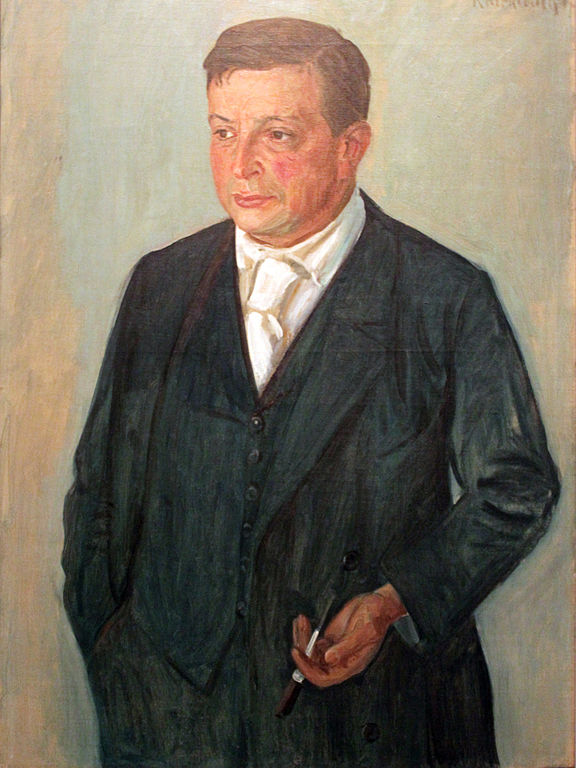

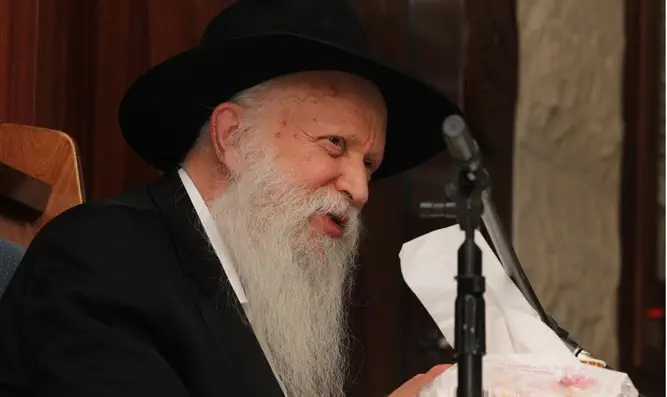
 Cover The Inner DimensionDr. Rogatchi
Cover The Inner DimensionDr. Rogatchi
 Michael Rogatchi (C). Shtetl Memories IV. Homage to Devilspiel novel by Grigory Kanovich. Mixed technique. 50 x 40 cm. 2020.
Michael Rogatchi (C). Shtetl Memories IV. Homage to Devilspiel novel by Grigory Kanovich. Mixed technique. 50 x 40 cm. 2020. Romualdas Kvintas (C). The Water-Carrier. Bronze. 2010. Unveiled in Vilnius on October 19, 2020. Courtesy: Egle Kvintiene. With kind permission of Egle Kvintiene.
Romualdas Kvintas (C). The Water-Carrier. Bronze. 2010. Unveiled in Vilnius on October 19, 2020. Courtesy: Egle Kvintiene. With kind permission of Egle Kvintiene. Archive photo of water-carrier from Vilnius. 1922. Courtesy: The Library of Congress, the USA. No reproduction restrictions.
Archive photo of water-carrier from Vilnius. 1922. Courtesy: The Library of Congress, the USA. No reproduction restrictions. Sculptor Romualdas Kvintas ( 953- 2018). Courtesy: (C) Egle Kvintiene. With kind permission of Egle Kvintiene.
Sculptor Romualdas Kvintas ( 953- 2018). Courtesy: (C) Egle Kvintiene. With kind permission of Egle Kvintiene. Ceremony of unveiling The Water Carrier sculpture in Vilnius. 19 October 2022. Photo : (C) Saulius Ziura. With kind permission of The Water Carrier project, Lithuania.
Ceremony of unveiling The Water Carrier sculpture in Vilnius. 19 October 2022. Photo : (C) Saulius Ziura. With kind permission of The Water Carrier project, Lithuania. Poet Moyshe Kulbak ( 1896 – 1937). Open Sources Archive, The Water-Carrier Project.
Poet Moyshe Kulbak ( 1896 – 1937). Open Sources Archive, The Water-Carrier Project. Poster for Der Vaser-Treger play performance at the Yiddish Art Theatre in New York, December 1936. Courtesy (C) American Jewish Historical Society. Permitted for reproductions in cultural and educational publications.
Poster for Der Vaser-Treger play performance at the Yiddish Art Theatre in New York, December 1936. Courtesy (C) American Jewish Historical Society. Permitted for reproductions in cultural and educational publications. At the unveiling ceremony of Romualdas Kvintas’ The Water Carrier sculpture. Photo: (C) Saulius Ziura. With kind permission of The Water-Carrier Project.
At the unveiling ceremony of Romualdas Kvintas’ The Water Carrier sculpture. Photo: (C) Saulius Ziura. With kind permission of The Water-Carrier Project. Arunas Kuliskausjas (C). Yesterday in Vilnius. 2020. With kind permission of the author.
Arunas Kuliskausjas (C). Yesterday in Vilnius. 2020. With kind permission of the author.
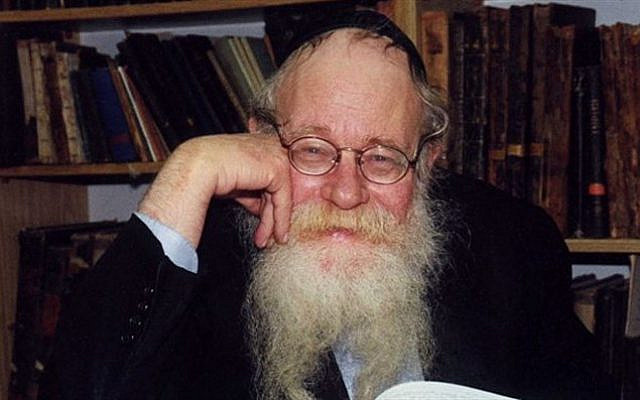 Rav Adin Even-Israel Steinsaltz. Courtesy: Steinsaltz Centre.
Rav Adin Even-Israel Steinsaltz. Courtesy: Steinsaltz Centre.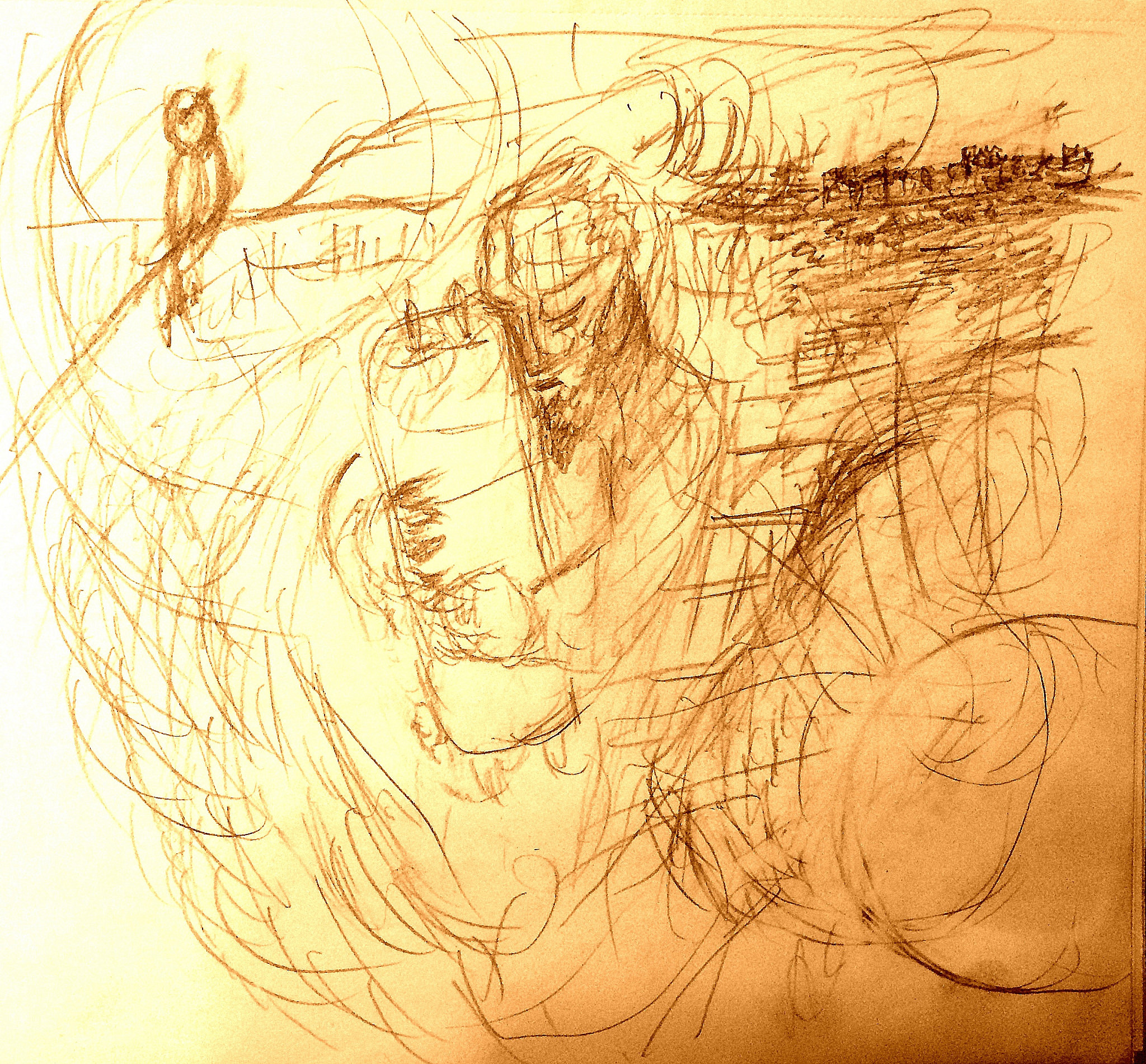 Michael Rogatchi (C). Eretz Israel. Journey in Time. Pen on cotton paper. 40 x 50 cm. 2016. Homage to Rav Adin Steinsaltz.
Michael Rogatchi (C). Eretz Israel. Journey in Time. Pen on cotton paper. 40 x 50 cm. 2016. Homage to Rav Adin Steinsaltz.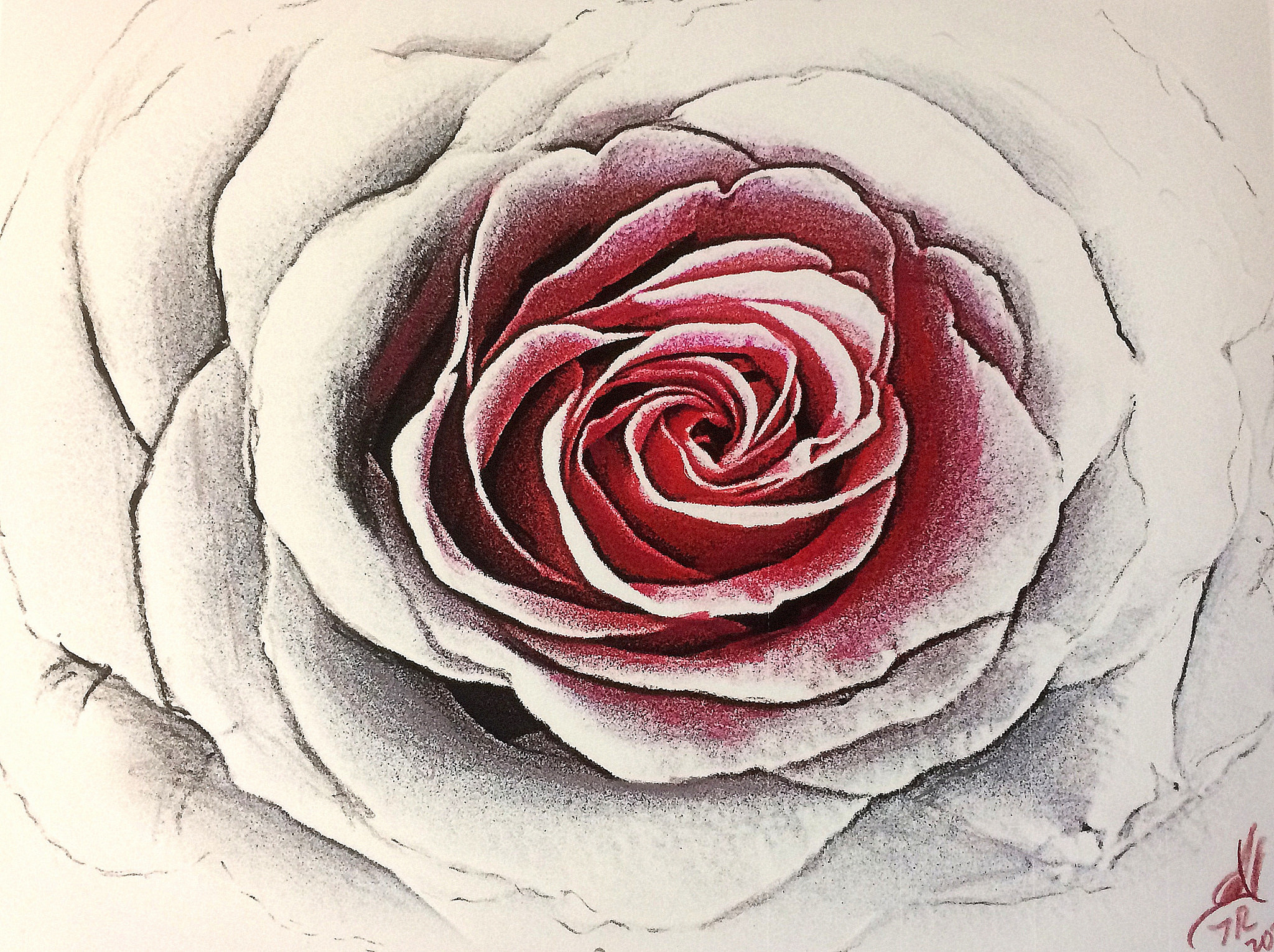 Inna Rogatchi (C). The Thirteen Petalled Rose. Homage to Rav Adin Steinsaltz. The Garment of the Moon series. Lapice pastel, crayons Luminance on authored original archival print on white cotton paper. 30 x 40 cm. 2020.
Inna Rogatchi (C). The Thirteen Petalled Rose. Homage to Rav Adin Steinsaltz. The Garment of the Moon series. Lapice pastel, crayons Luminance on authored original archival print on white cotton paper. 30 x 40 cm. 2020. Inna Rogatchi (C). Clouded View. Watercolour, crayons Luminance on authored original archival print on cotton paper. 30 x 40 cm. 2020.
Inna Rogatchi (C). Clouded View. Watercolour, crayons Luminance on authored original archival print on cotton paper. 30 x 40 cm. 2020.



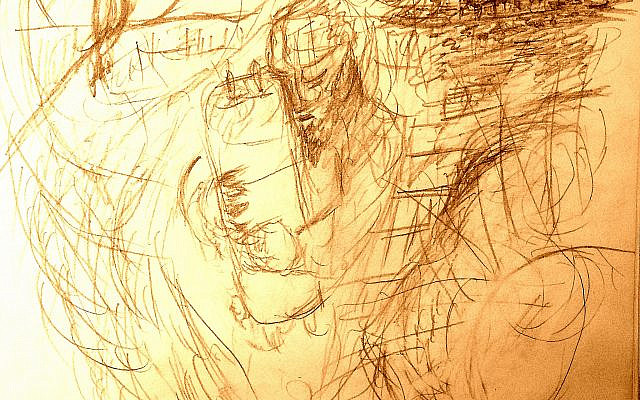 Michael Rogatchi (C). Eretz Israel. Journey in Time I. Pencil on white cotton paper. 30 x 40 cm. 2016. The Rogatchi Art collection.
Michael Rogatchi (C). Eretz Israel. Journey in Time I. Pencil on white cotton paper. 30 x 40 cm. 2016. The Rogatchi Art collection.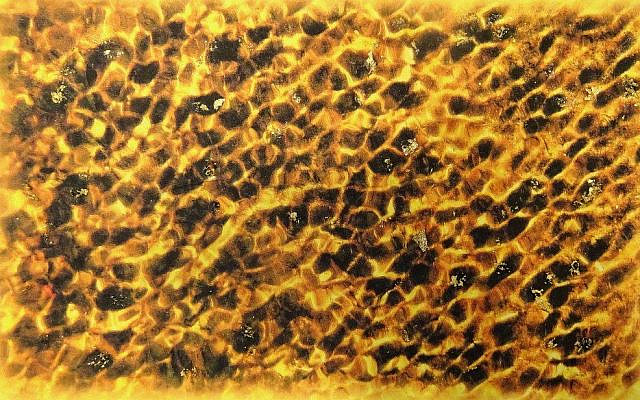 Inna Rogatchi (C). The Light of the Torah I. The Light of the First Day project. Watercolour, crayons a encre, oil pastel, hand-applied gold leaf on authored original archival print on cotton paper. 30 x 40 cm. 2018-2019. Private collection, Israel.
Inna Rogatchi (C). The Light of the Torah I. The Light of the First Day project. Watercolour, crayons a encre, oil pastel, hand-applied gold leaf on authored original archival print on cotton paper. 30 x 40 cm. 2018-2019. Private collection, Israel.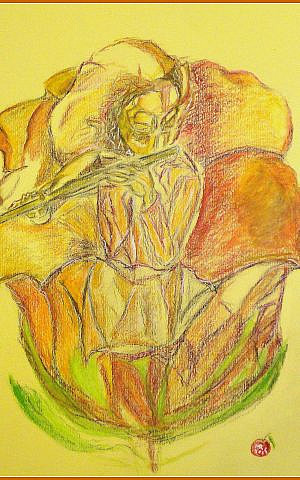 Michael Rogatchi (C). Shavuot Rose. Indian ink, oil pastel on yellow Italian hand-made cotton paper. 50 x 35 cm. 2015.
Michael Rogatchi (C). Shavuot Rose. Indian ink, oil pastel on yellow Italian hand-made cotton paper. 50 x 35 cm. 2015.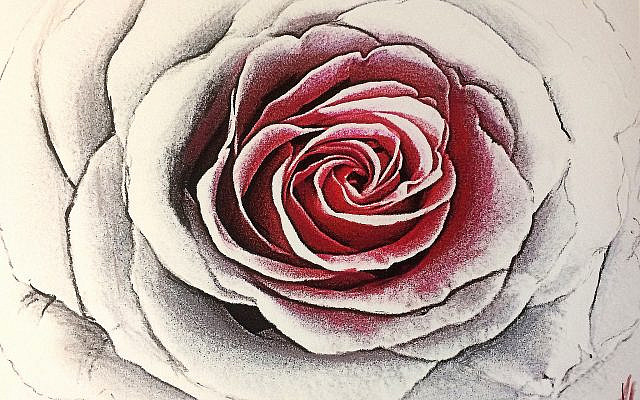 Inna Rogatchi (C). The Thirteen Petalled Rose. The Garment of the Moon series. Lapice pastel, crayons Luminance on authored original archival print on white cotton paper. 30 x 40 cm. 2020.
Inna Rogatchi (C). The Thirteen Petalled Rose. The Garment of the Moon series. Lapice pastel, crayons Luminance on authored original archival print on white cotton paper. 30 x 40 cm. 2020.
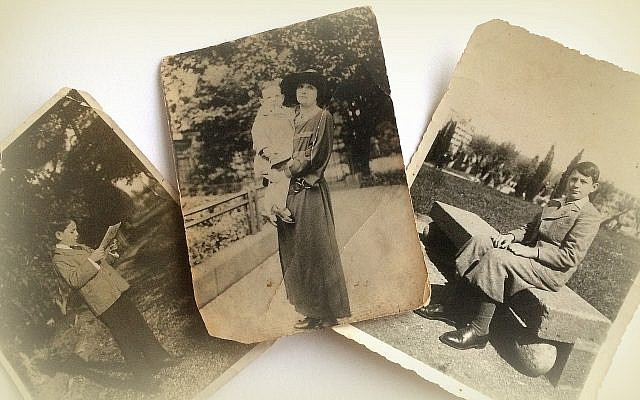 Simcha Bujanover and Eleanor Rose family and their son Alex in Berlin in the 1920s and in Paris in the 1930s. (C) Inna Rogatchi archive.
Simcha Bujanover and Eleanor Rose family and their son Alex in Berlin in the 1920s and in Paris in the 1930s. (C) Inna Rogatchi archive.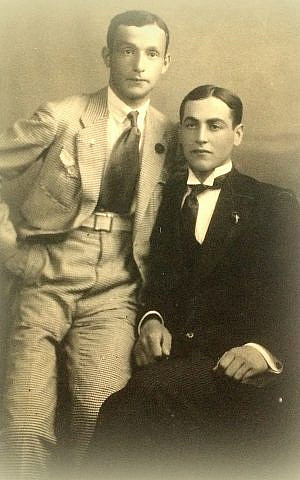 Chaim and Simcha ( sitting ) Bujanover brothers in Zurich, before the Great War. (C) Inna Rogatchi Archive.
Chaim and Simcha ( sitting ) Bujanover brothers in Zurich, before the Great War. (C) Inna Rogatchi Archive.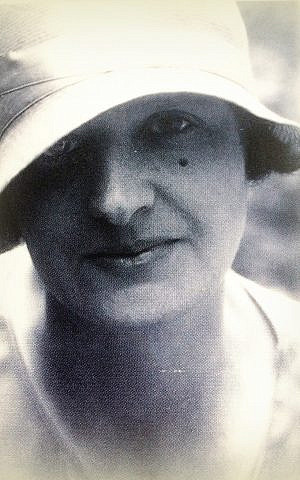 Eleanor Rose in the 1920s in Berlin. Rose Family Archive.
Eleanor Rose in the 1920s in Berlin. Rose Family Archive.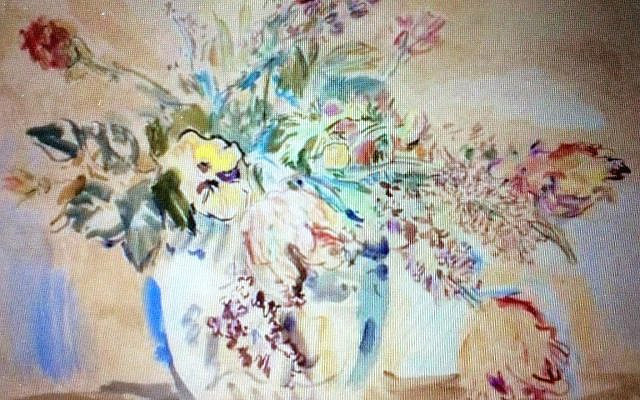 Oscar Kokoschka (C). Still-Life. Watercolour. 1942. The artist created this work as his gift to Arnold Rose in 1942. Kokoschka’s inscription on the art work reads: “To the god of the violin, in your winter of exile”. Courtesy: The Gustav Mahler-Alfred Rose Collection , Music Library, University of Western Ontario, Canada – The Mahler Foundation.
Oscar Kokoschka (C). Still-Life. Watercolour. 1942. The artist created this work as his gift to Arnold Rose in 1942. Kokoschka’s inscription on the art work reads: “To the god of the violin, in your winter of exile”. Courtesy: The Gustav Mahler-Alfred Rose Collection , Music Library, University of Western Ontario, Canada – The Mahler Foundation.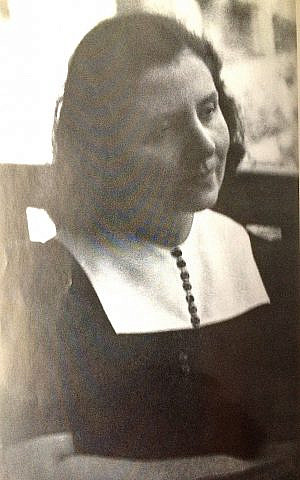 The last photo of Alma Rose taken by Paul Staercke in Amsterdam in December 1942 just shortly before Alma’s attempt to run to safety. Photo courtesy: Staercke family archive. The copy of the photo is shown in the Richard Newman’s Alma Rose. Vienna to Auschwitz book, 2000. Newman received the photo on his request from Marye and Paul Staercke in the 1980s.
The last photo of Alma Rose taken by Paul Staercke in Amsterdam in December 1942 just shortly before Alma’s attempt to run to safety. Photo courtesy: Staercke family archive. The copy of the photo is shown in the Richard Newman’s Alma Rose. Vienna to Auschwitz book, 2000. Newman received the photo on his request from Marye and Paul Staercke in the 1980s.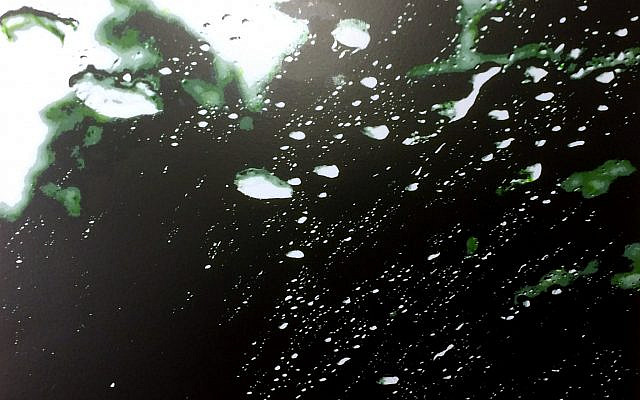 Inna Rogatchi (C). Reading Elie Wiesel. Watercolour, Indian ink on authored original archival print on cotton paper. 40 x 40 cm. 2018-2019. Ghetto Waltz series.
Inna Rogatchi (C). Reading Elie Wiesel. Watercolour, Indian ink on authored original archival print on cotton paper. 40 x 40 cm. 2018-2019. Ghetto Waltz series.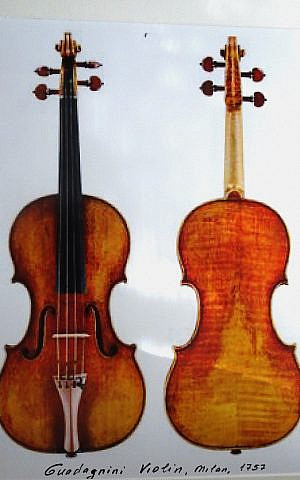 Inna Rogatchi (C). Alma Rose Guadagnini 1757 violin. Milan. Presentation material. (C).
Inna Rogatchi (C). Alma Rose Guadagnini 1757 violin. Milan. Presentation material. (C).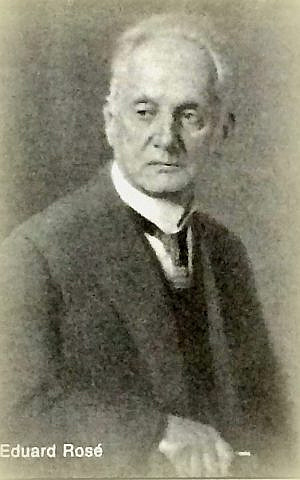 Eduard Rose, eminent cellist murdered in Tereziensdadt in 1943 in the age of 83. Courtesy: The Mahler Foundation.
Eduard Rose, eminent cellist murdered in Tereziensdadt in 1943 in the age of 83. Courtesy: The Mahler Foundation.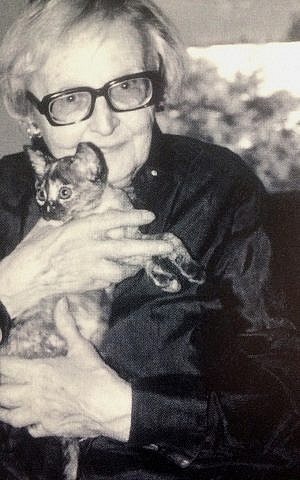 Eleanor Rose in her flat in London in the 1980s. Courtesy: Rose family archive.
Eleanor Rose in her flat in London in the 1980s. Courtesy: Rose family archive.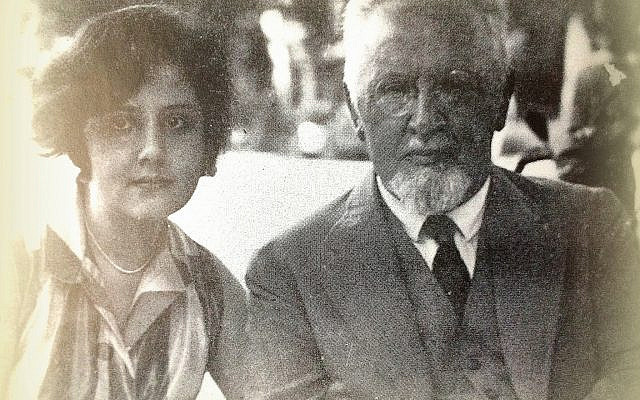 Arnold and Alma Rose in 1927 , a year before making that only known record of them playing together and only known record of Alma Rose. Courtesy: The Gustav Mahler-Alfred Rose Archive.
Arnold and Alma Rose in 1927 , a year before making that only known record of them playing together and only known record of Alma Rose. Courtesy: The Gustav Mahler-Alfred Rose Archive.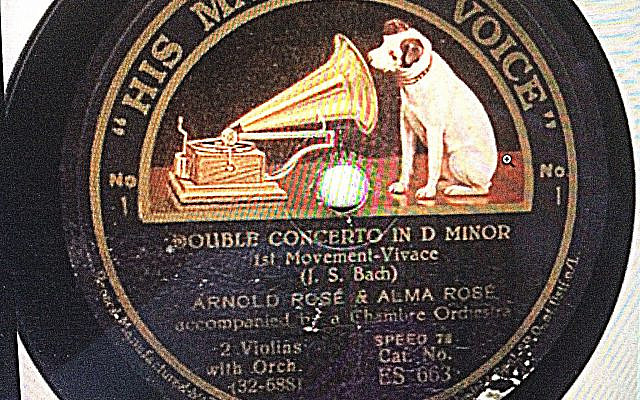 Inna Rogatchi (C). Arnold & Alma Rose original record. Fine Art Photography Collage. 2012. Presentation material (C).
Inna Rogatchi (C). Arnold & Alma Rose original record. Fine Art Photography Collage. 2012. Presentation material (C).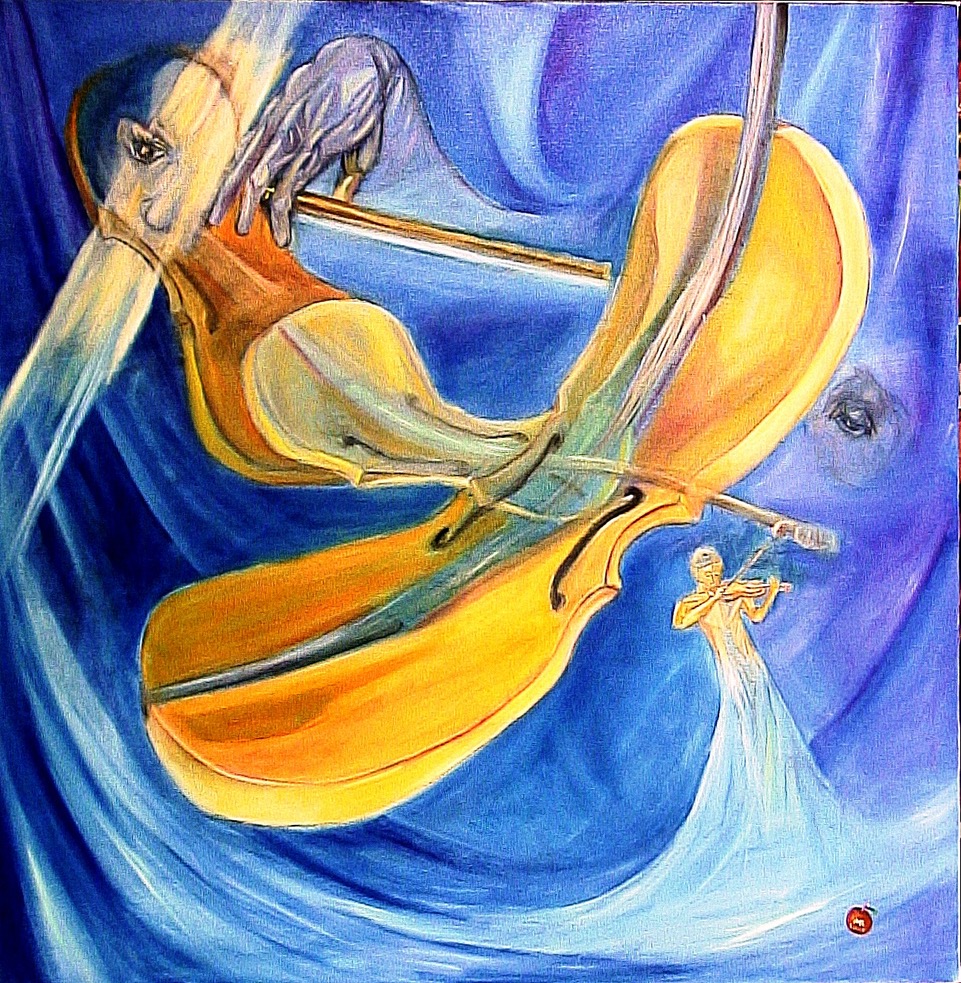 Michael Rogatchi (C). J.-S. Bach. Concerto for Two Violins in D Minor. Oil on canvas. 120 x 100 cm. 2007. Private collection.
Michael Rogatchi (C). J.-S. Bach. Concerto for Two Violins in D Minor. Oil on canvas. 120 x 100 cm. 2007. Private collection.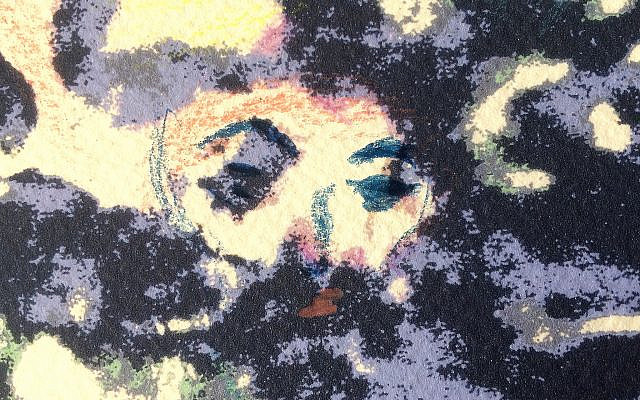 Inna Rogatchi (C). Cloud View II. Fragment V. Crayons a encre, crayons Luminance on authored original archival print on watercolour 350 mg paper. 42 x 59 cm. 2019-2020. Ghetto Waltz and The Songs of Our Souls series.
Inna Rogatchi (C). Cloud View II. Fragment V. Crayons a encre, crayons Luminance on authored original archival print on watercolour 350 mg paper. 42 x 59 cm. 2019-2020. Ghetto Waltz and The Songs of Our Souls series.